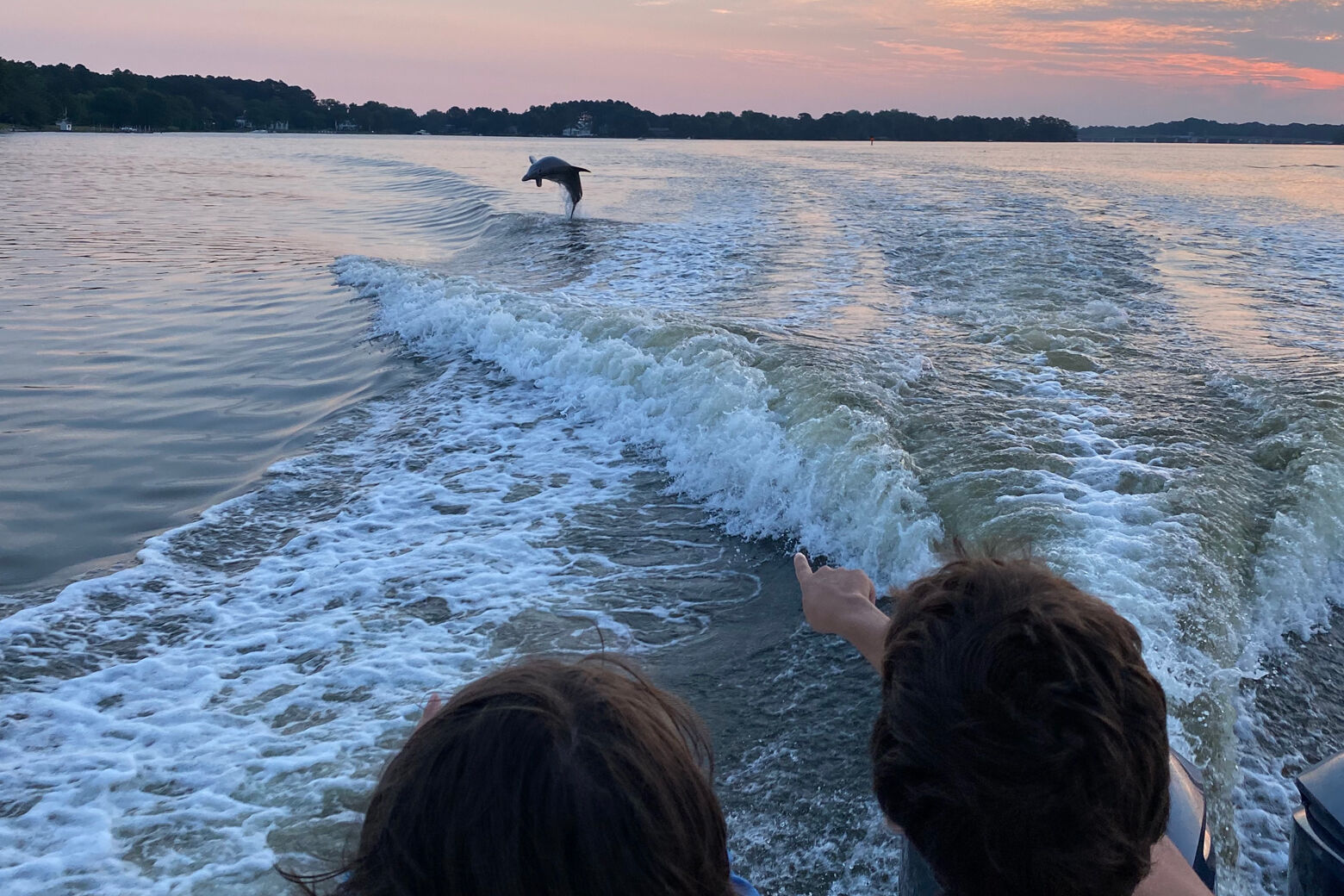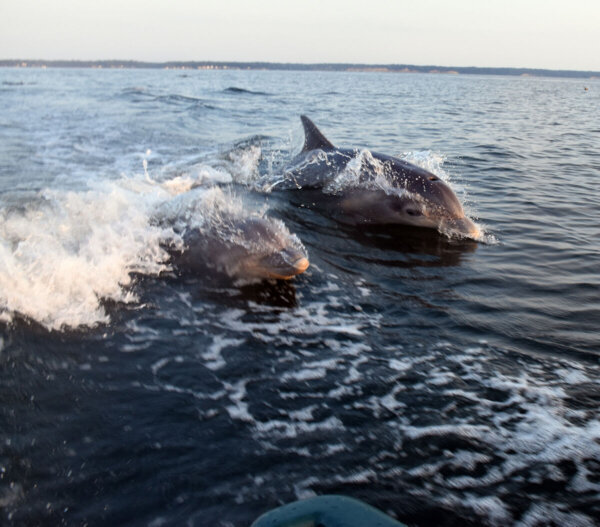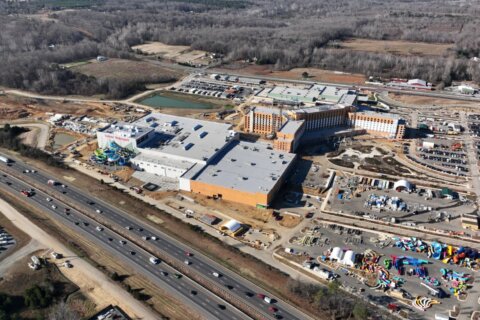The Chesapeake Bay may be more important to dolphins than many realize. Researchers are shedding light on what the clever mammals are doing here.
They say the bottlenose dolphins normally live in coastal ocean waters, but they do come into the Chesapeake Bay.
“We’ve seen evidence of them foraging and feeding, we’ve seen evidence of them rearing their young and nursing their young, giving birth and mating behaviors,” said Chesapeake DolphinWatch project coordinator Jamie Testa.
“We might find dolphin year-round in the lower part of the bay, closer to the ocean,” even in rivers and creeks near the lower and middle bay, she said.

When to comes to dolphin sightings in the middle and upper portions of the Chesapeake Bay, “May to September is your window. June to July is the peak — the best opportunity,” she said.
Fortunately for humans, when it comes to the dolphins’ eating habits, “We don’t have any evidence that dolphins are eating crabs in the bay.”
Most of their food appears to be smaller fish, she said.

Testa said the research continues, but that intriguingly, some small groups of dolphins have even been reported in the Chesapeake and Delaware Canal, which connects the upper bay to the Delaware River.
You can share your dolphin sightings with the researchers.








